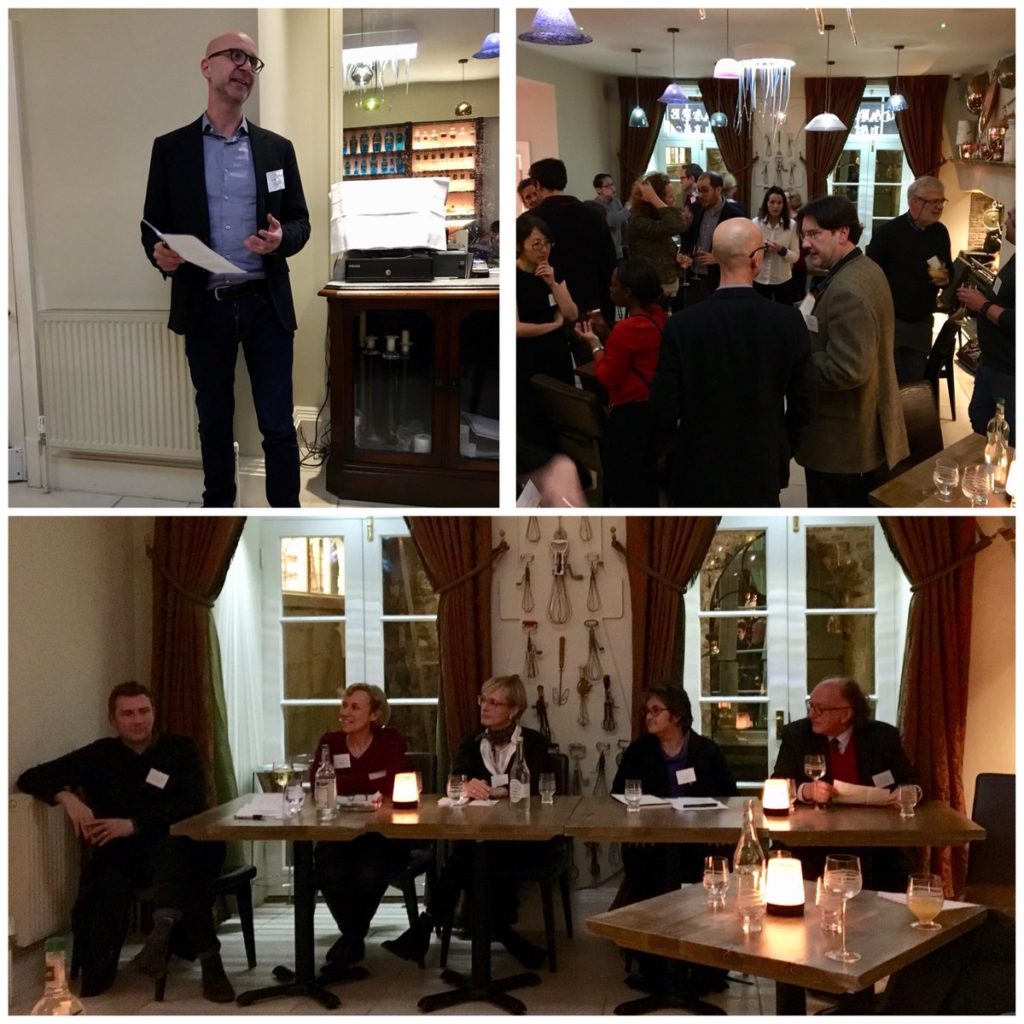Interdisciplinary work holds lots of promise for business and society research, but it is also highly challenging. Sarah Glozer, Deputy Director of the Centre of Business, Organisations and Society, summarises the advice from our recent event about how to make it work in practice.
As universities, journals and funding bodies call for greater interdisciplinarity in our research, we brought an international group of academics together last night to debate one key question: how do we make interdisciplinary research work in the context of business and society research? Over food, drinks and a good dose of speed networking, we debated the challenges and opportunities of interdisciplinarity. Here are our top six tips for success.
1. Keep it practical. The best way to galvanise interdisciplinary interest around an issue is to get your hands dirty. See the issues first hand and focus on a specific problem or challenge with real-world impact. Trying to artificially force researchers together from different disciplines and expecting to see ‘something new’, risks getting stuck in the weeds. Get out there, find your common problem, and take it from there. This is about making it matter and developing problem-based teams.
2. Look for the easy wins. It is arguably easier to make novel contributions and have more meaningful impact in interdisciplinary teams. Knowing your respective subjects so well, it is easy to identify gaps when you start comparing across disciplines. We are trained to have deep areas of specialism, so let’s exploit these. Issues of business and society cannot be dealt with by each of us on our own, and so think about what skills you can bring to the table and don’t be afraid to make broad assertions early on to establish common ground.
3. Speak the same language. In interdisciplinary research, it is important to really integrate the scope of the work across the team, not just pay lip service to ‘collaboration’. Make sure that all parties are involved from the get go to avoid being perceived as convenient ‘add-ons’ and make sure to generate a shared package of work. This is about identifying capabilities (and points of disconnect) from the outset, and being transparent. This might even involve going back to basics… What’s the point? Why do we need an interdisciplinary perspective here? What’s the added value?
4. Set a goal. Interdisciplinarity requires a change in mindset. We need to be open minded and define a shared goal. In business, the goal of collaborative efforts is making money. In academia, what is the goal? More importantly, in business and society research who are our key stakeholders? Yes, we want to solve problems, yes, we want to generate good scholarship, but is there more to the project than this? An aligned goal and a joint framing of questions sets the core focus and breaks down silos.
5. Build relationships. We need to learn from each other and so we should base teams not just on skills, but also attitude. Interdisciplinarity teaches us to be tolerant, but most importantly, we learned last night that the best projects are those where we establish healthy ways of working. Let’s enjoy this. Interdisciplinary research can be exciting and stimulating. If it’s a pleasure, we are learning. And if we are learning, we are likely breaking new ground. The successful teams are those that embrace ignorance and aren’t afraid to get out of their comfort zone. It is easier to do this with researchers you can call friends, or where there is mutual respect for one another’s work.
6. Break the mould. Let’s be clear about the challenges. This isn’t easy, particularly for early career academics. We need to create the right environment and recognise that we have different measures of output in different disciplines. Are we talking impact, funding or journal rankings, or all three as measures of success? Whilst we have the intention to be interdisciplinary, the system can sometimes stifle creativity. How do we get the gatekeepers to really buy into this? How can we work to break the mould for early academic leaders of tomorrow?

To round off the event, the panellists were asked for their final comments on the question, ‘What advice would you give to inspire interdisciplinarity in business and society research?’
- “It’s about solving problems and changing the world. We have to be open to new perspectives.” Adam Joinson, Professor of Information Systems, University of Bath
- “Listen, talk and form a gang. You can make a new field. Just look at the business ethics area which was formed from the interaction of moral philosophers and social scientists.” Laura Spence, Professor of Business Ethics, Royal Holloway, University of London
- “Form educational systems across disciplines and learn from one another.” Mette Morsing, Mistra Chair of Sustainable Markets and Scientific Director at Misum, Stockholm School of Economics
- “There are differences and diversity even within disciplines. Let’s recognise this and identify synergies. Don’t just focus on the lowest common denominator.” Julie Barnett, Professor of Health Psychology, University of Bath
- “Impact, stimulation and let’s recognise power. What structures enable and constrain our activities?” David Cooper, Professor in Accountancy, Alberta School of Business
Feature image by cactusbeetroot under CC BY-NC-2.0
Respond



